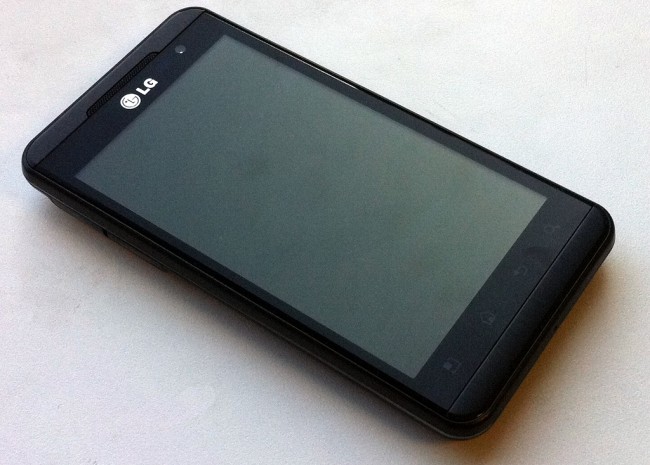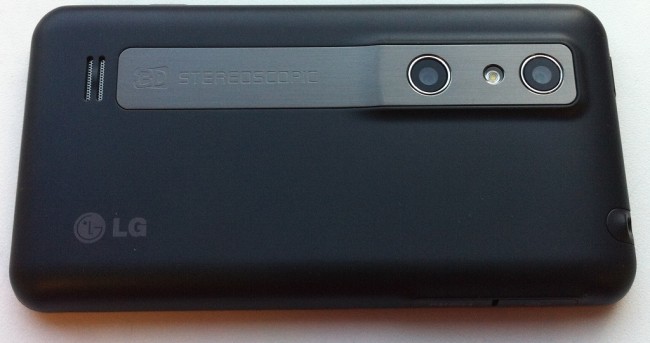The LG Optimus 3D is a device that takes the smartphone in to the realm of glasses-less 3D. The screen is quite unique in that when watched in landscape mode, you can watch 3D content that appears to pop out of the screen. Lets take a look to see if it’s any good.

The hardware looks good although quite sizeable at 128 x 68 x 11.9mm. It’s larger than other regular smartphones on the market but not over bulky. The build quality is good and the device feels quite sturdy in hand. On the front is a 4.3 inch 3D screen while on the back, a couple of 5 megapixel cameras set at a small distance appart to allow it to capture both video and still images in 3D if desired. The cameras are 5 megapixels each.
The operating system running on the LG Optimus 3D is Android 2.2.2 out of the box which means it’s a little behind when compared to those that run Gingerbread. The OS works well on the device though and in most cases, scrolling around is quite fluid. There’s a few times while in use that things seem to freeze up for a few seconds but in general the transitions and loading works well.
The main feature of the Optimus 3D is of course the 3D screen. Initial tests were quite amazing especially when loading up the unique 3D content menu. Animations appear to jump out of the screen. The games that come standard on the handset get the appearance of layers being added to the game such as Golf showing the player on the screen with the grass sitting “inside” the screen if that makes sense. It’s difficult to picture that as anything uploaded here will naturally be 2D on a regular monitor.
YouTube also has some unique 3D content (tagged YT3D if you want to search for it) that shows how the device can perform. Although there’s a number of videos available which are 3D ready, the real problem with the 3D aspect falls under two categories… first, it eats up the battery and second, there isn’t much beyond photos, games and YouTube that’s 3D on the device. This is the main problem with a 3D device, at the moment it’s a little too niche. If LG could make the whole Android interface 3D then that would be something! There needs to be more 3D smartphones launched before that could happen though.
Moving on to the cameras on the device, the back has two 5 megapixel sensors which are set a little apart. By capturing with both cameras at the same time the depth is able to be added to the pictures. 3D is optional on the Optimus 3D camera settings which means you get to shoot slightly higher quality 2D images or lower quality 3D images. Likewise, video is captured in 3D or 2D with 2D being captured at 1080p and 3D at 720p. What impressed us most is how good the 3D looks on the small screen. Parts of it look layered but in general you can see the depth added to the videos.

Overall the Optimus 3D is a decent smartphone. The cameras work well, the screen looks great and the OS performs quite well (with a few buggy slow downs occasionally). The downsides are the battery life which we struggled to get a day out of (even with switching most functions off) and the lack of 3D content for it. The content that comes with it and that can be accessed via YouTube is good, but the 3D experience starts and ends at that point. Another potential problem with glasses-less 3D is that it isn’t for everybody. For this reason we recommend you try before you buy as my own personal use made my eyes struggle and then take a few minutes to adjust back after using it, but it didn’t stop me from using 3D as it looks quite amazing.
The LG Optimus 3D is available on the Three network in the UK with prices starting at around £35/month for the Text 500 plan.





Speak Your Mind
You must be logged in to post a comment.